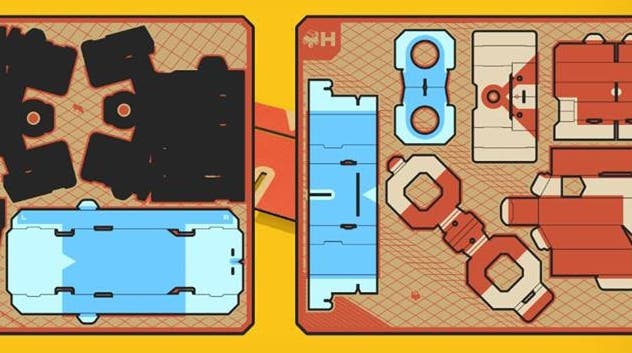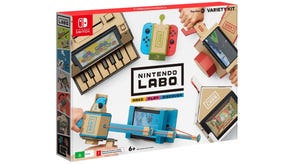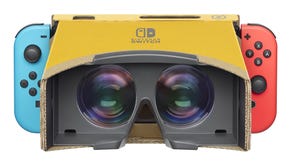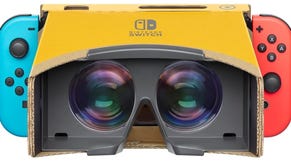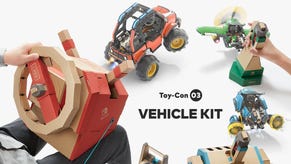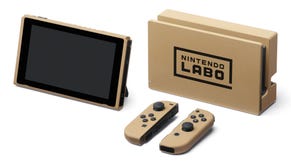Nintendo Labo's latest addition is its most traditional, and its most substantial
The wheel deal.
You find the heart of a game in some surprising places. Take a typical Sakurai joint, which might nominally be about scrapping across large arenas and trying to knock your opponent off the screen. That's not what Smash is about, though - its real heart is in the menus, in their abundance and splendour and their hearty, generous and colourful spill. Play a game like Diablo and it's not so much about what happens when you're crushing skulls - it's about the screen where you're optimising your character so that they might crush skulls in the most efficient way possible.

Across Nintendo's Labo range - a much more peaceful affair than Diablo, it must be said - you'll find the heart in the cardboard itself that's flat-packed in each sizeable box. Maybe that's not so much of a surprise, really, but it's in the construction that Labo really shines. While everyone else at Eurogamer gets stuck back into Destiny 2, I've spent each evening over the past week piecing together the various devices in the new vehicle kit, and it's been a delight. There's something warming about sitting in the glow of a living room as the nights begin to draw in, sipping tea and poking pieces of cardboard out of thick sheets, the little bits of excess card dropping to the floor like autumn leaves.
And there's something so satisfying in piecing together a Labo kit, Nintendo making you complicit within its masterpiece of engineering with minimal fuss, friction and frustration. Indeed, even as you're folding cardboard and placing rubber bands and reflective stickers in their correct place, it's every bit the Nintendo game, from the playful energy of the instructions to the many, many flourishes that make a three hour construction session an absolute joy - the tactility of the blueprints, the precision and clarity with which you're directed and, of course, the sheer ingenuity you can find in a world of cardboard lug nuts and springs. No other game has made me smile as much this year, and certainly none have made me sit back in wonder quite so much either. It might all be meant for kids, but hey, just like Lego, Labo is too much fun to miss out on.
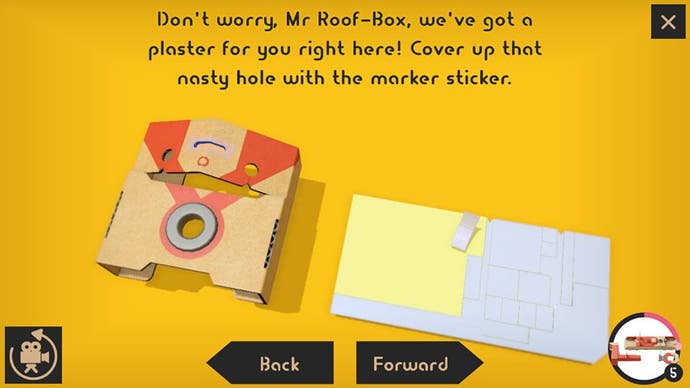
The vehicle kit also enables some more traditional play experiences, though before we get to them let's talk about the peripherals themselves. The submarine is controlled by a neat and sturdy device, the plane by a joystick that's remarkably pliable given the materials used, but really it's the steering wheel that's the star, the simple exterior hiding some seriously complex guts and finished off with some incredible touches. There are levers that clack into place, a pulley that allows you to boost along at speed, and it's accompanied by the pedal that powers all the vehicles and is itself a solid piece of kit that offers a fair amount of feedback thanks to the combination of a rubber band providing resistance and a Joy-Con giving a little rumble.
It's lovely to play with, though it can't hide the fact that the game it powers is far from the star of the show. Not that the games included within the Labo Vehicle Kit aren't good, and there's a fair few of them too. There are battle modes where you can pit vehicles against each other, a slot racer powered by the pedal alone that's simplistic yet incredibly satisfying, and straight-up racing that's also a joy (and, thanks to custom controls available in this kit, you're able to enjoy them just using the Joy-Cons if you wish to sidestep the Labo devices themselves).
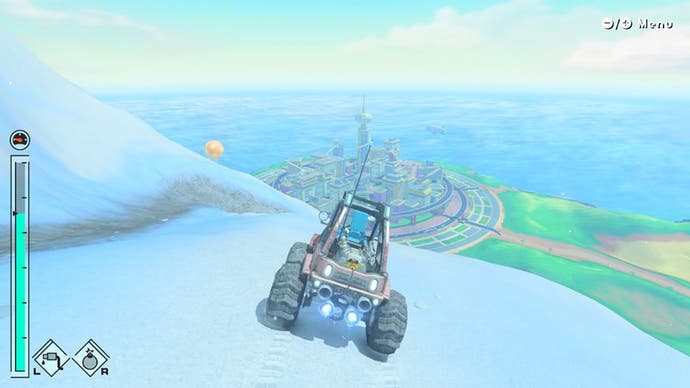
The backbone of this kit, though, is the open world that's been provided for the vehicles to explore, full of mini-objectives and secrets. It's full of lovely details itself - I love the V6 engines that putter away at the core of each vehicle, and the exposed mechanics that, along with the cardboard you crafted yourself, makes you feel connected to each machine - and the world itself is an enjoyable, if thin, place to prod around. There's something of Pilotwings in the freeform, laid-back nature of it all, and indeed it's probably as close to a follow-up to that particular series we'll get in a while. It's a fun diversion, but I don't think it'll last you quite as long as the process of building the machines themselves, or be quite as enjoyable.
Though good lord how enjoyable that part of the process is. Labo might not have caught the wider imagination and become a mainstream success like some predicted - though there's still the possibility that Nintendo's slowly building up momentum ahead of a big Christmas push - but for lovers of the weird and wonderful that represents the very best of the Kyoto outfit, the uptake of this new endeavour is neither here nor there. This was, and very much still is, Nintendo at its most magical.
